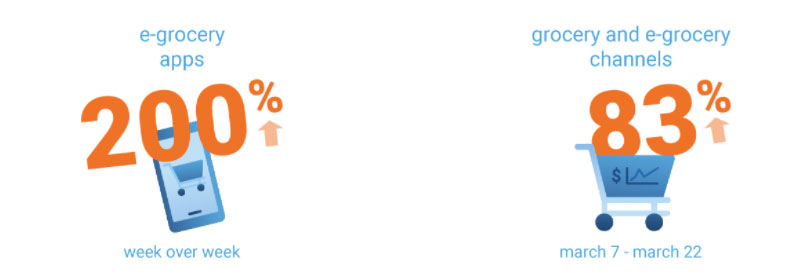Restaurants Need to Look Outside Current Customers
For years, restaurant marketers have looked inside to current customer data as a roadmap for future sales. First party data provided a perfect seed for look-alike modeling to then build scale. “I know my customer” was the mantra. And data science could build off of that seed a perfect mold to cast a repeatable customer that shared the same basic demographic profile and broad interests. It became a drug. And everybody was hooked.
But now things have changed. The landscape of the restaurant category has bifurcated leaving two sides—the haves and the have nots. The haves are restaurants—QSRs, Fast Casual, and Casual Dining—that before the current health crisis enjoyed significant take-out and delivery businesses. The have nots on the other hand, include restaurants that have been forced to shut their doors and wait it out until their dine-in services can continue.
The nationwide shelter-in-place mandates have caused the restaurant industry to rethink their way forward, but it has also significantly changed the way everyday people live their everyday lives. Families and individuals daily routines have shifted significantly, routines that included, before a couple of months ago, their favorite local eateries. Now schedules have changed and people need to adjust to allow for the new normal. And so do restaurants. And it starts with the customer.

For many customers, their new routine includes eating at home more often. Grocery and e-Grocery channels continue to boom with Barons reporting an 83% year-over-year surge from March7 – March 22 and e-grocery apps continuing their historic download rates also increased, many well over 200% week over week.
an opportunity to support and service new customers
But for many restaurants, it means an opportunity to support and service new customers: underserved segments of customers previously supported by competitors who are no longer available. But it’s not enough to simply target other competitors. The key is to first understand the new landscape and create audiences that can appeal to new customer sets with shared affinities. After all, we know that a die-hard vegan customer won’t frequent a McDonald’s no matter how much their options have changed.
Affinity Answers social insights understand shared, over-indexed lifestyle and media affinities at a brand level and can build audiences based on how those affinities are shared across restaurant brands. We help restaurants understand the overlaps between their customers and their competitor’s customers, whether a national chain or a large regional competitor. These shared affinities identify the customers who are most likely to dismiss, try, or switch between restaurant brands. Our audience segments and campaign strategies have helped national and regional restaurant brands over the last 10 years acquire new customers and open new markets.
It is a difficult time, but there is also so much opportunity. Shoot me an email and I can walk you through how our affinity-based insights can help you uncover new audiences.
Talk soon – josh@affinityanswers.com


Josh Raper VP, Marketing
Josh has spent the last 20 years in advertising working with brands, agencies, and private equity leading award-winning campaigns for brands like McDonald’s, Kellogg’s, InBev, and esurance.


